Tea for You | Bring Out the Best in Your Cup
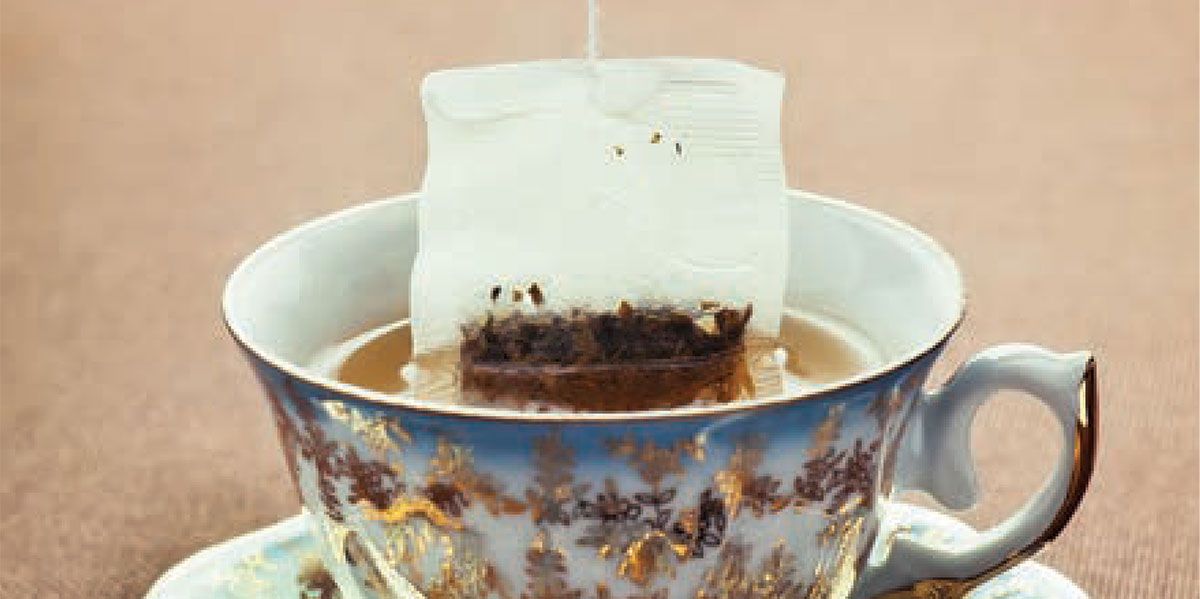
Whether a blustery winter evening, a crisp spring morning, or a sultry summer afternoon, tea is always the perfect beverage. Served warm or cool, herbal or fully loaded with caffeine, tea can help you relax, recharge and refocus all at once. You would expect nothing less from a beverage that dates back thousands of years, the popularity of which has spanned countless cultures across the centuries.
Tea is also known for its various health benefits. Teas are rich in antioxidants, and research suggests tea provides flavonoids, which may relieve inflammation. Tea is also calorie-free, and even fully caffeinated varieties provide roughly half the caffeine of coffee, so you get some pick-me-up without the jitters.
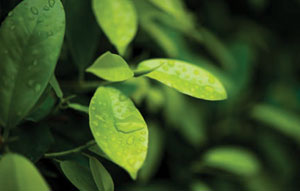 There are hundreds of tea leaf varieties to choose from, to suit every mood and taste. But what are the major differences and what’s the best way to choose, brew, and drink your tea?
There are hundreds of tea leaf varieties to choose from, to suit every mood and taste. But what are the major differences and what’s the best way to choose, brew, and drink your tea?
Tea 101
Black, green and oolong tea all hail from the same plant: Camellia sinensis. What distinguishes each type is treatment after harvest and the level of oxidation—the process by which tea leaves are exposed to air to dry. Much like a sliced apple or a cut avocado that begins to turn brown, tea leaves undergo a process by which they darken based on oxygen exposure.
Black tea is arguably the most commonly used tea. It gets its dark appearance due to being fully oxidized. Green tea is slightly heated right after harvest, to prevent oxidation, while oolong falls somewhere between, with leaves that are only partially oxidized.
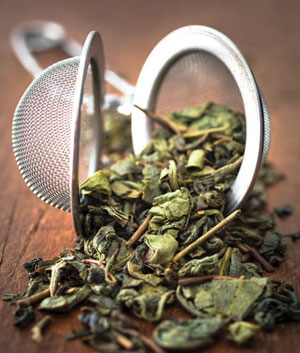 Herbal teas do not originate from the Camellia sinensis plant but from any number of herbs, flowers and spices such as peppermint, spearmint, chamomile, ginger, rose hips, and countless others. Chicory is a flowering herb from the dandelion family that has, since the 17th century, been used as substitute for coffee. Today, you can buy this caffeine-free tea blended with vanilla and hazelnut flavors in grocery stores under brand names like Teechino.
Herbal teas do not originate from the Camellia sinensis plant but from any number of herbs, flowers and spices such as peppermint, spearmint, chamomile, ginger, rose hips, and countless others. Chicory is a flowering herb from the dandelion family that has, since the 17th century, been used as substitute for coffee. Today, you can buy this caffeine-free tea blended with vanilla and hazelnut flavors in grocery stores under brand names like Teechino.
When buying tea, the majority of stores sell an assortment of boxed tea in bags. Tea bags rose in popularity because they are convenient and are portioned to allow for a good surface area ratio, meaning the bags are filled with just enough tea to expand in the bag while still allowing the water to get to the tea leaf surface. To up your game, look for unusual tea bag shapes like pyramids, “sachets,” or larger pouches, which provide better surface area ratio for the water to reach the leaves, or are packed with more tea.
Some true tea aficionados opt for loose tea leaves, which you can buy at grocery stores, or at specialty and international markets. Loose tea saves on paper and waste, and allows you to personalize by mixing leaves from different teas to create your own blend. You can purchase a tea infuser or a metal tea ball that opens to add loose tea and bob in your teacup to steep. Or, you can put loose tea into a teapot and then use a small strainer when pouring the tea into your cup.
Whether bagged or loose, look for “whole leaf” tea for the best quality, best flavored tea. When leaves are torn into smaller particles, more surface area is exposed and they lose essential oils. Larger leaves have decreased surface area, which means less evaporation of essential oils.
Some of the most common black tea blends include the popular blend of Assam, Ceylon and Kenyan teas in English Breakfast, Earl Grey with its unique citrusy bergamot, and the popular Irish Breakfast blend of Assam and Ceylon teas. One wonderful pure leaf tea is Darjeeling, made from Camellia sinensis grown and processed in the Darjeeling or Kalimpong districts of India. Some lighter tea blends include jasmine tea, which often has green or white tea as a base scented with jasmine blossoms. For stronger flavor, lapsang souchong leaves are smoke-dried over a fire.
As a general rule, for loose tea, use one level teaspoon for every 8 ounces of hot water. Herbal teas with more volume (like mint or chamomile) or teas with larger leaves, such as oolong or green tea, might need an extra teaspoon. With tea bags, start with one bag per 8 ounces of hot water and adjust from there to personal taste.
If you are steeping tea to make iced tea, make it twice as strong so the flavor stands up over ice, and add sugar or sweetener while the tea is still hot so it fully dissolves.
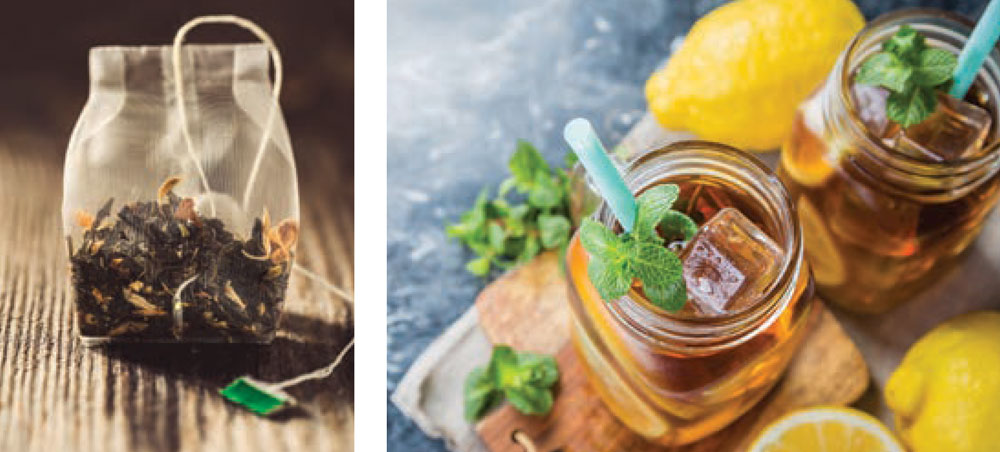 What’s brewing?
What’s brewing?
To start your perfect cup of hot tea, you should begin with freshly drawn water, and ideally, it would also be filtered. One of the key elements to make good tea is oxygenated water, so water fresh from the tap is better than water that has been sitting in your kettle from the day before. Let the water run for a bit, so it’s more oxygenated than water that has been sitting in your sink pipes.
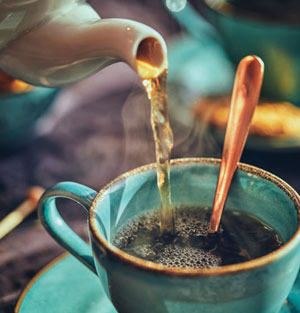 Using a stovetop tea kettle or a plug-in electric kettle, heat the water to boiling or, if possible, just before boiling to preserve oxygen. Then, leave it for 2-3 minutes to cool before pouring. This will prevent scalding or burning the delicate leaves.
Using a stovetop tea kettle or a plug-in electric kettle, heat the water to boiling or, if possible, just before boiling to preserve oxygen. Then, leave it for 2-3 minutes to cool before pouring. This will prevent scalding or burning the delicate leaves.
Use any extra hot water to “scald” your tea pot or mug, pouring hot water in to heat it up, then pouring it out and refilling with your brewed tea. This helps keep your cup of tea nice and warm.
Brew your tea for the recommended time on your tea packaging, not for longer. If you like your tea stronger, don’t steep for longer; that will just lead to bitter tea. Instead, add more tea leaves or an extra tea bag.
With some attention to detail, you’ll be able to maximize your tea experience, allowing you to fully enjoy a quiet moment to yourself, taking some time to brew just what you want, when you want—sipping at a leisurely pace, and savoring the taste and warmth. ✦
antioxidants, Black tea, Camellia sinensis, chamomile, flavonoids, flowers, Ginger, green tea, Herbal teas, herbs, inflammation, oolong tea, peppermint, rose hips, spearmint, Spices, tea, whole leaf






